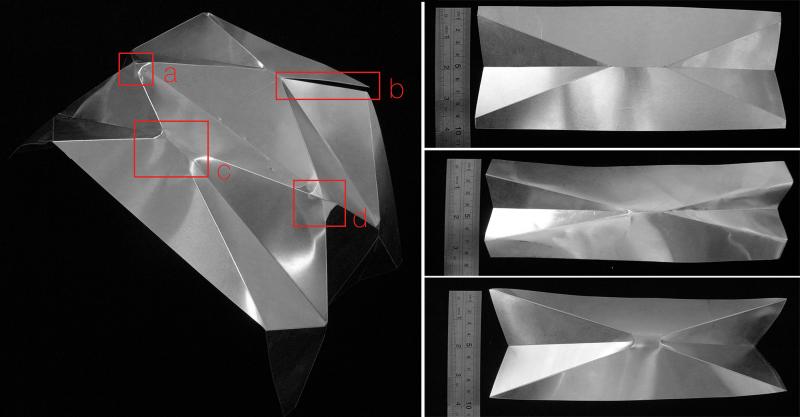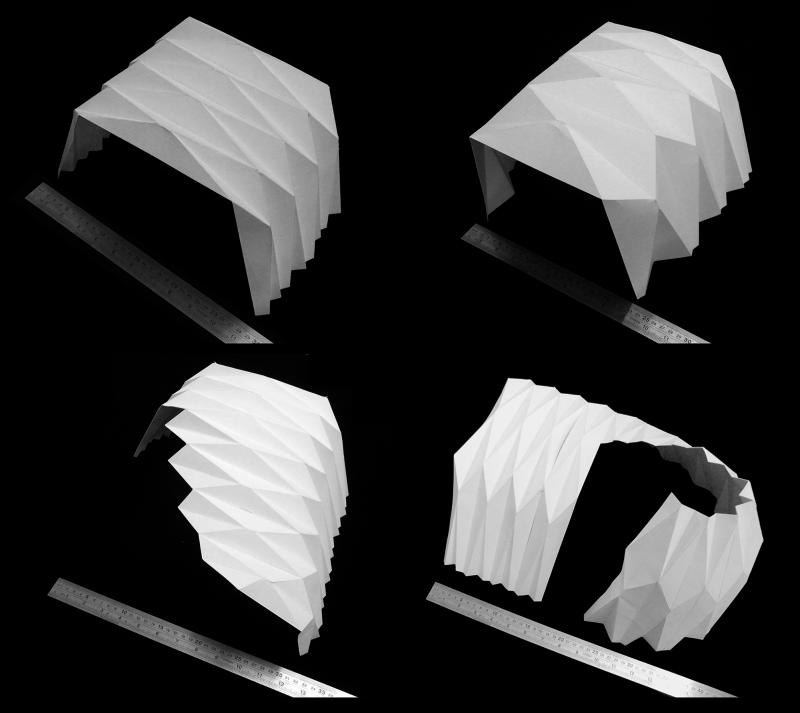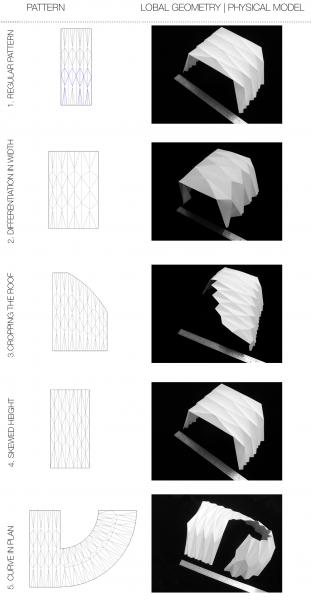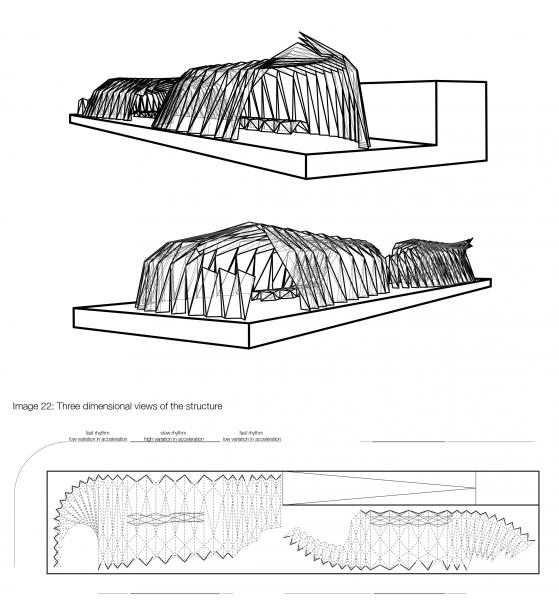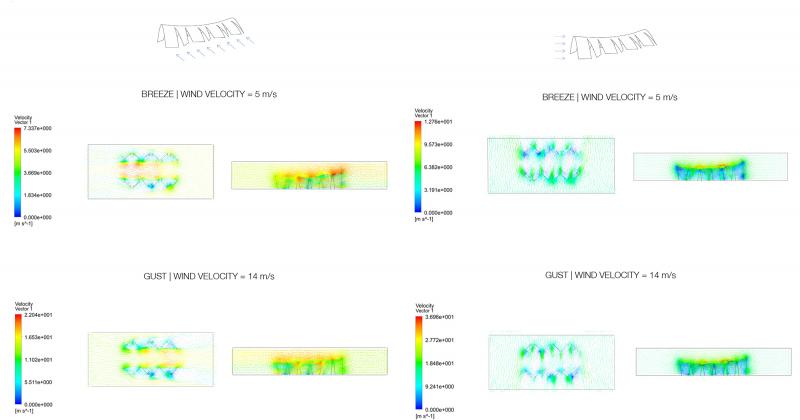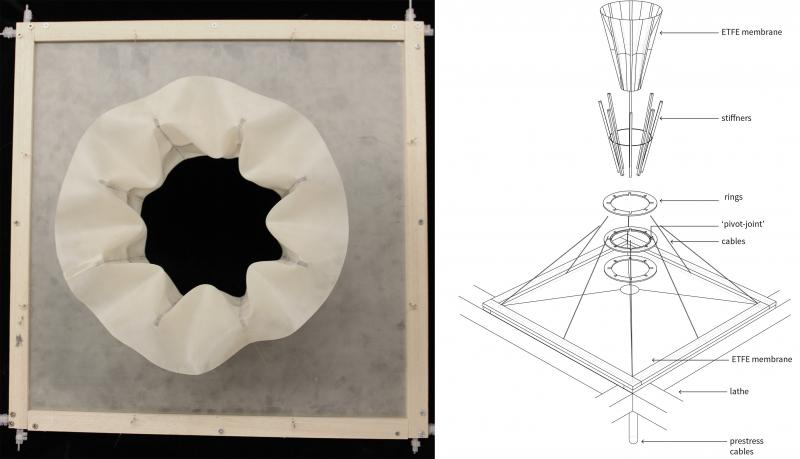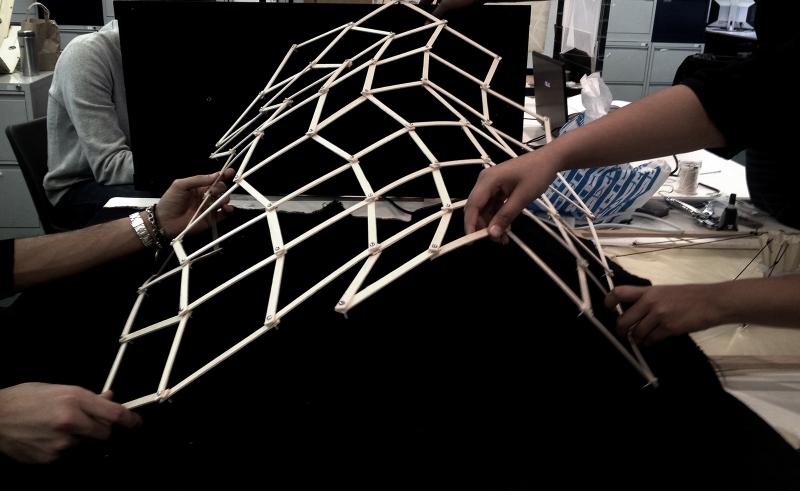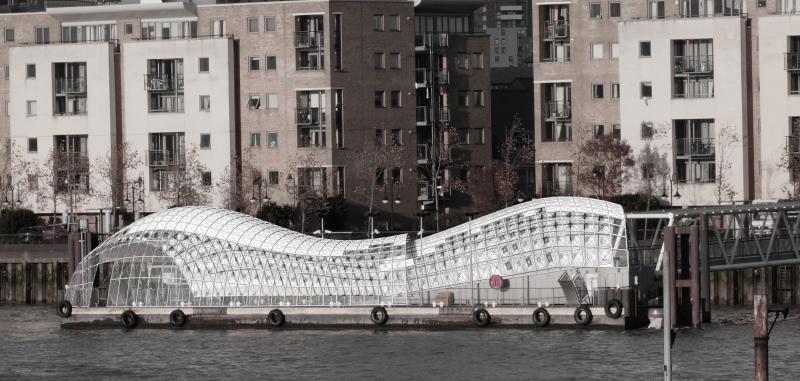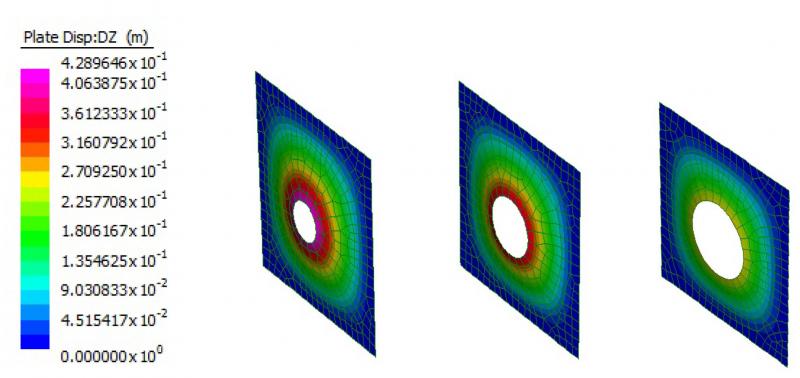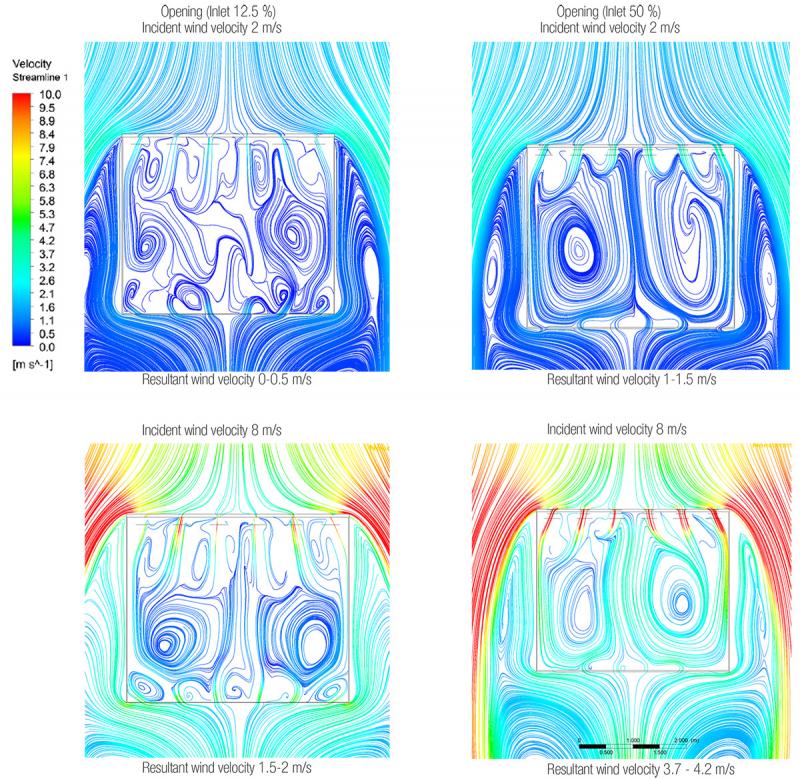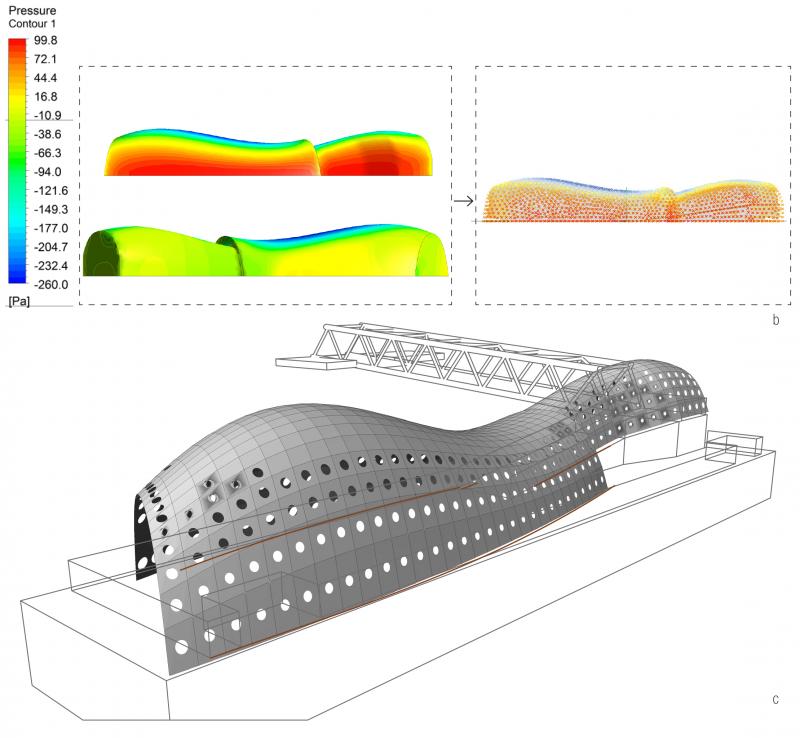Marea
The proposed surface utilizes the tidal energy to change its geometry depending on the relative position of the pier to the riverbed; to achieve this, there needs to be two connections: a fixed one and a dynamic one. The proposed material system is based on a rigid boundary made from fiberglass and a flexible pre-stressed membrane. The interaction between these two elements generates the geometry of the component.
Stanley Carroll
Jose Garcia
Alessandra Fabbri
Daniel Zaldivar


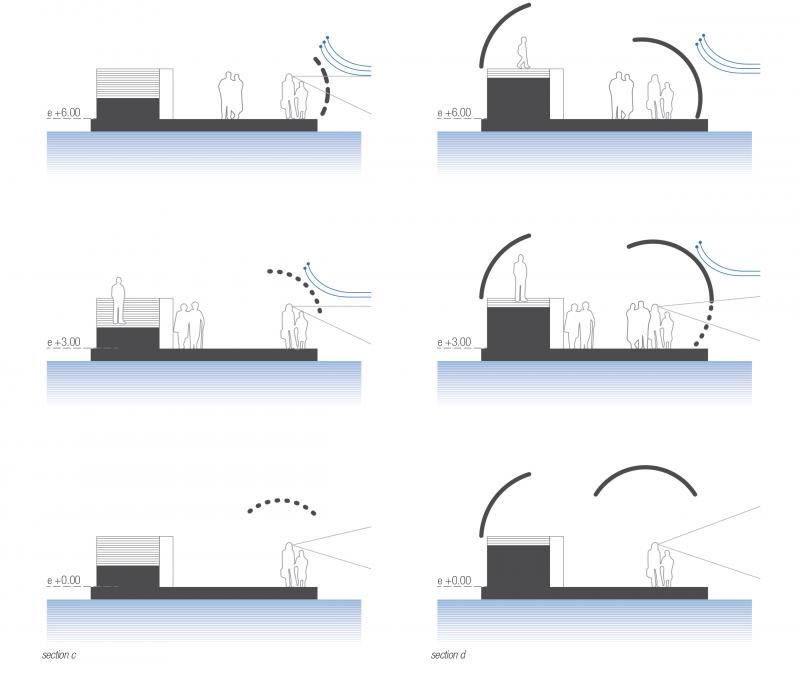
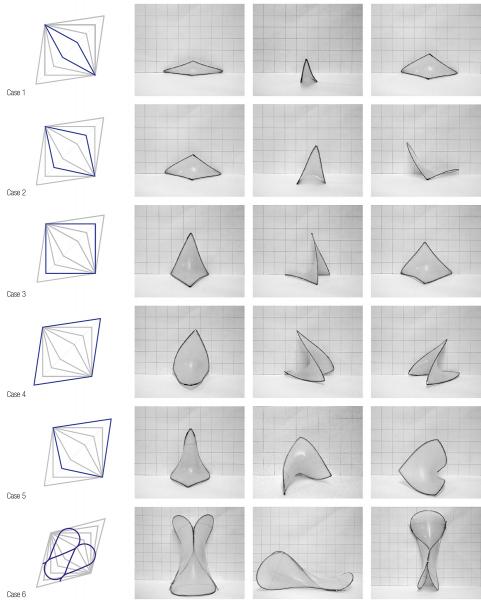
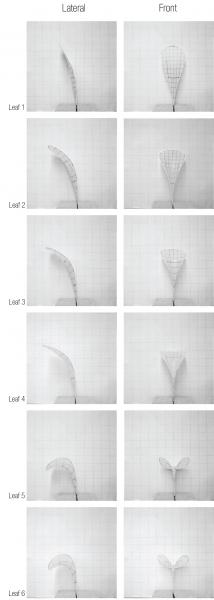
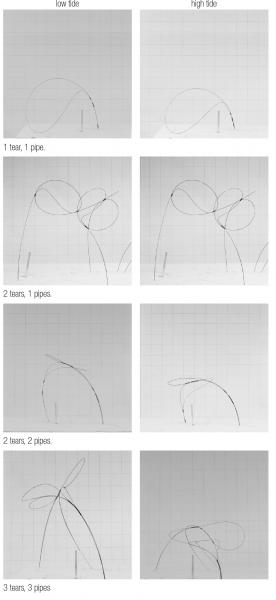
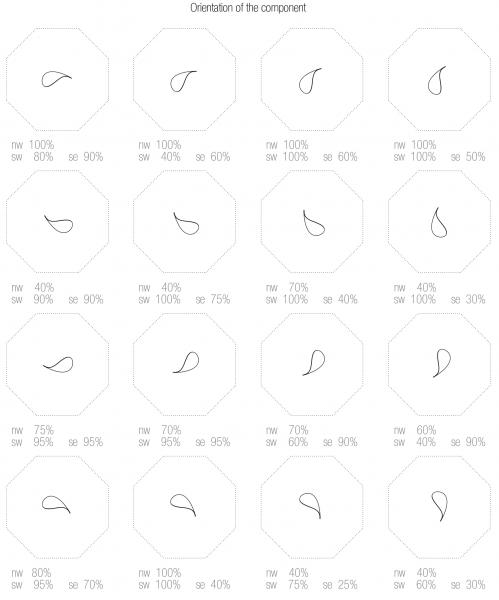
etal-28.jpg)
etal-19.jpg)
etal-23.jpg)

.jpg)
